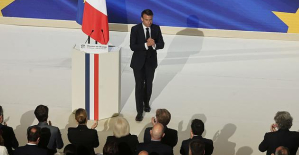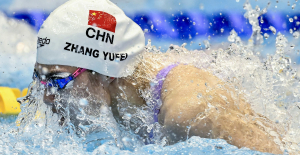Forli! Cesena! Rimini! Even 50 years ago, these place names got me excited. They were written in white letters on the green signs along the Autostrada and sounded south and sun. Back then we – my father, my mother, my brother and I – sped along the Adria Autobahn in our wine-red Opel Rekord with a vinyl roof on our way to the Teuton grill for the summer holidays. We spent five three-week vacations there from 1972 to 1976.
Five decades later I'm back on the Riviera Adriatica, as the coastal strip between Cervia and Cattolica with the more than 50 km long sandy beach is called today, which of course sounds better than Teuton grill. I want to know: How has the area changed? Who is vacationing here today? And above all: What did I miss back then, what can you experience here beyond the beach, far away from the big hotels?
Anything that lies away from the hotel cosmos that stretches along the coast like an endless concrete worm is new territory for me. From back then I almost only knew the beach and the artificial world of holiday accommodation by the sea. Their names ("Bristol", "Palm Beach", "Kusaal") testify to the considerable creativity that the builders displayed in order to give the two- and three-star reality a touch of glamor.
As a child I loved the Teutonengrill: better weather, delicious food, smart Italians. We were on and in the water from morning until late afternoon, in the evening we went to the hotel dining room to collectively take the booked half-board. I still remember how great I loved the Italian pasta: lasagna, stuffed cannelloni, green tagliatelle! I didn't know any of that, at home pasta was only served as a sweet milky soup.
After dinner we strolled through the streets lined with the hotel, my father bought my mother cheap leather handbags and gave us children gelato in fantastic varieties such as zabaglione or tiramisu, which we didn't know from Fürst-Pückler-Eis-Germany.
Back in Hamburg, my brother and I longed for the next twelve months of summer vacation in Bella Italia. We had seen almost nothing of the country. No historical old town, no museum, no trattoria, no place in the hinterland (apart from a trip to San Marino where we bought colorful stamps). Our father wanted it that way. Our mother, who would have liked to get to know culture and history, complied - until she freed herself from the corset and divorced in 1977, which brought our series of Teuton barbecue holidays to an abrupt end.
Unlike then, I now travel by train. The names of the stations - Ravenna, Milano Marittima, Cervia - are just as evocative as the places on the highway signs. I get off in Rimini, skipping the hotel district by the sea to see what my father skipped five decades ago: the old town. A wonderful ensemble from the Renaissance and Roman times.
You could spend whole days here admiring the Tempio Malatestiano, a colossal church with a snow-white marble facade and a Crucifixion scene by Giotto. Stroll to Piazza Cavour with the Teatro Galli; the square is Rimini's biggest stage with its markets and open-air bars. A few steps further, the Roman roads Via Flaminia and Via Emilia meet.
From the inconspicuous boulder in the middle of the Piazza Tre Martiri, Julius Caesar is said to have 49 BC. shouted the famous saying "The die is cast" to his army after he had crossed the Rubicon and then continued his triumphal march towards Rome. This is not guaranteed with the saying, but the anecdote is so beautiful that every city guide mentions it.
The Via Emilia leads north over the 2000 year old Tiberius Bridge, which is still standing. It connects the old town with the fishing district of San Giuliano, where there are no longer any fishermen, but the heirs of the fishermen still run inviting fish restaurants in the brightly painted houses of their ancestors.
Of course, you also have to visit the 15th-century Castel Sismondo, where Rimini set up a well-done, interactive museum for his oldest son, the director Federico Fellini ("La dolce vita"), which also delights non-Italians, who are not everyone Have seen the Fellini film.
In Fellini's footsteps, we head to the sea: to the "Grand Hotel Rimini", opened in 1908 and since then the best hotel on the entire Riviera Adriatica. The art nouveau palace on the beach promenade has retained its grandezza to this day; the maestro always stayed here in suite 315 when he visited his native city. It has been preserved true to the original and can be booked. If you are wondering about the life-size golden sculpture of a rhino in the hotel garden: This is also thanks to Fellini - it played an important role in his film "Ship of Dreams".
The hotel is not far from the place where tourism on the Adriatic began in 1843: the first bathing establishment with a spa house was opened just outside the town at that time. But back then there weren’t masses of water fun like today: “No one could swim,” says city guide Monia Magalotti, “people were left to soak in the water like tea bags for a quarter of an hour, that’s it.”
Given the wealth of cultural and historical treasures that Rimini offers, I'm a little angry with my father: how could he keep all this from us? Why wasn't he curious about real life beyond the hotel strip? I can't ask him anymore, he passed away years ago.
I found an answer in the French tourism researcher Jean-Didier Urbain: My father was a typical beach holidaymaker. What distinguishes him is that he has no real tourist interests, he loves the surprise-free ritual of going to the beach, the hotel buffet, socializing in the evening, surrounded by people from his tribe. Excursions or even contact with locals, possibly in a foreign language? Don't!
Today, travel behavior has changed. Although the rows of parasols are still the main attraction of the Riviera, you can now hear German voices in Rimini's old town and see groups of study travelers moving through the streets. On the coast of Emilia-Romagna, as the region is officially called, Germans and Swiss make up the largest contingent of foreign tourists this year, while Italians on domestic holidays continue to account for the lion's share of overnight stays. Russians were almost completely absent, in 2021 there were still seven direct flights from Russia to Rimini.
The beaches are not only relaxed because of the lack of Russians, but also because important things are happening at the sea: Unlike in the 70s and up to two years ago, there are no longer any motor scooters and convoys of cars rushing close together between the hotels and the beach along. Bit by bit, the road disappears, giving way to a beachside park that's a good half-complete and a hit with locals and tourists alike.
In 2026, the new waterfront promenade should be completed. "A revolutionary project," says Rimini Mayor Jamil Sadegholvaad: "16 kilometers of waterfront will be transformed into a green infrastructure with bicycle and pedestrian paths, open-air gyms, dunes and marine forests. In doing so, we are creating the largest natural wellness and well-being area in Europe.”
It is a pity, however, that the visionary park idea will not be implemented on the entire Riviera. The coast is fragmented into different communities, each cooking its own soup, which as a tourist makes you shake your head. Cycle paths often end abruptly at the place-name sign of the next municipality, and there is also no coordinated local public transport. The new Metromare, a trolleybus line almost ten kilometers long between Rimini and Riccione, deserves praise.
Riccione is the most glamorous place on the Riviera. A few pompous villas still bear witness to the town's glorious history at the end of the 19th century, including Villa Mussolini from 1890, which the dictator had converted and used as a summer residence. The property in the style of fascist modernism now serves as an exhibition center.
In the 1970s, Riccione didn't stand out from the crowd of Adriatic resorts, but since the turn of the millennium attempts have been made to tie in with the sophisticated past. With success: the hotels are smarter (and more expensive) than in the neighboring towns, along the pedestrian zone Viale Ceccarini, which is filled with Italo-Pop from public loudspeakers, trendy bars, cocktail lounges and designer boutiques line up in a dense which can easily keep up with Milan. For party people, this is the most popular hotspot on the Adriatic, as evidenced by the 1.4 million Instagram entries under the hashtag
Things are more down-to-earth north of Rimini. In the suburb of Bellaria I find the hotel "La Perla". The current owner, Daniele Berardi, is the third generation to run it and gives me a spontaneous tour when he learns that my family and I vacationed here several times in the mid-70s.
He completely renovated it, merged the formerly tiny rooms into larger units and turned the house into an art hotel – with maritime blue tones and art photos on the walls (Berardi is not only a hotelier, but also a photographer). He replaced the bulky reception desk with a much more practical piece of furniture: a well-stocked bar.
The "La Perla" is one of around 3,000 hotels that were built on the Teutonic grill in the 1960s and 1970s, when the coast became the hotbed of Italian mass tourism. The founders have long since passed away, the hotels have been inherited and repainted, and some have also been redesigned.
All have one architectural style in common: predominantly brutalist concrete facades, often with balconies facing the sea. Some find the hotel boxes ugly, for others they are remarkable landmarks that should best be protected in order to preserve this ensemble of holiday architecture, which is unique in Europe. In Italy, with its thousands upon thousands of monuments from antiquity and the Middle Ages, which often decay despite monument protection, this is of course unthinkable.
In the midst of the hotel complexes that line up for miles, two historical gems stand out that we always passed without paying attention to during our family holidays: Cesenatico and Cervia. Five decades later I know: That was a mistake!
Cesenatico is a medieval gem - built around a port canal designed by the universal genius Leonardo da Vinci in 1502. His plan stopped the port from silting up, and to this day fishermen go out to sea with their cutters and land their catch at the fish market around noon.
The pier on both sides of the canal is a lively promenade: from the shore you can admire dozens of historic fishing boats with brightly colored sails - each family of fishermen had a different sail pattern, a kind of coat of arms that served as identification. The boat fleet is the floating part of the local maritime museum, the associated mainland department of the Museo della Marineria is located directly on the harbor canal and explains in detail the history of seafaring on the Adriatic down to the art of the seaman's knot.
On top of that, both banks of the canal are a huge gourmet area: Here one restaurant follows the next, most of them specializing in fish, such as the "Osteria Bartolini", which is famous for its Gran Fritto - wafer-thin fried pieces of fish and seafood, wonderfully aromatic, no comparison to the greasy fish fingers of my childhood.
The finest fish cuisine is served up at “La Buca” a few doors down: Anyone who tries the amazingly sea-tasting amberjack carpaccio with sea urchin knows immediately why a Michelin star shines over the restaurant.
Cervia, Cesenatico's neighbor to the north, also offers something unique beyond the beach: Italy's northernmost salt works stretches around two kilometers from the sea. On the one hand, the finest salt in the country is extracted on the 827-hectare site, on the other hand, the water landscape, which is criss-crossed by dams, is a unique nature reserve.
You can only visit it as part of a guided tour, which is definitely worth it: dozens of bird species cavort in the pools and canals, with a bit of luck you can even catch flamingos in front of the camera. Salt production is explained in quick succession, in the visitor center you can try different types of salt, which are still produced by hand today. Because their salt contains only a few bitter substances, in Cervia they speak of "sale dolce", sweet salt.
Cervia itself is a kind of Wolfsburg on the Mediterranean: a workers' town, but much nicer than the Lower Saxony car metropolis, because it was built in the 17th and 18th centuries for the salt workers and is a walk-in monument, the highlight of which is the Museo del Sale in an earlier Salt storage hall is. Here you will learn how salt crystals are formed, the effort required to 'harvest' saline salt by hand, and see Italy's largest collection of salt shakers.
Milano Marittima, Cervia's northern district, is the next surprise: a garden city completely hidden in a pine forest. Although it is right on the sea like the other bathing resorts, since it was founded in the early 20th century and enjoys ensemble protection, there are no big hotels here, but elegant villas and boutique hotels. The crowd wears Gucci and Prada, cruises in a Ferrari for an aperitivo that costs as much as a full dinner in Bellaria.
We could never have afforded such grandeur 50 years ago, but I would have loved to have taken a trip here. Namely to the wonderfully old-fashioned ice cream parlor "L'Ottocento", which is considered the best on the Adriatic. After a spontaneous tasting, I can confirm the good reputation - the homemade ice cream bombs would have even lured my skeptical Teutonic father away from the beach.
Arrival: With EC or night train from Munich to Bologna, change trains there to Rimini and other coastal towns. From Germany there are only connecting flights to Rimini, for example with Luxair. Lufthansa flies from Frankfurt and Munich to Bologna.
Accommodation: The finest accommodation on the coast is the "Grand Hotel Rimini", double rooms from 162 euros, grandhotelrimini.com. The second five-star hotel on the Riviera, the “Grand Hotel Da Vinci” in Cesenatico, also offers luxury and a top location, double rooms from 167 euros, grandhoteldavinci.com. Both hotels have pools and private beach, they welcome guests all year round. There are family hotels in all coastal towns, such as "La Perla" in Bellaria (double rooms from 66 euros, laperlahotel.it) or the "Hotel Polo" in Rimini (double rooms from 54 euros, hotelpolo.it). The bathing season ends at the end of September, many of the almost 3,000 hotels then close, but around 18 percent are open in winter.
Worth seeing: In Rimini, the Fellini Museum (fellinimuseum.it) and the PART, which shows contemporary art in two historical palaces (palazziarterimini.it), are worthwhile. The Museo della Marineria (museo marineria.it) illuminates shipping and fishing on the Adriatic. You can find out everything about salt in Cervia in the Saline (salinadicervia.it) and in the Musa Salt Museum (musa.comunecervia.it/en/home.html)
More information: emiliaromagnaturismo.it; riminiturismo.it; visitcesenatico.it; turismo.comunecervia.it; enit.de.
The research was supported by Emilia Romagna Turismo. You can find our standards of transparency and journalistic independence at axelspringer.com/de/Werte/downloads.

 Hamas-Israel war: US begins construction of pier in Gaza
Hamas-Israel war: US begins construction of pier in Gaza Israel prepares to attack Rafah
Israel prepares to attack Rafah Indifference in European capitals, after Emmanuel Macron's speech at the Sorbonne
Indifference in European capitals, after Emmanuel Macron's speech at the Sorbonne Spain: what is Manos Limpias, the pseudo-union which denounced the wife of Pedro Sánchez?
Spain: what is Manos Limpias, the pseudo-union which denounced the wife of Pedro Sánchez? Spain is the country in the European Union with the most overqualified workers for their jobs
Spain is the country in the European Union with the most overqualified workers for their jobs Parvovirus alert, the “fifth disease” of children which has already caused the death of five babies in 2024
Parvovirus alert, the “fifth disease” of children which has already caused the death of five babies in 2024 Colorectal cancer: what to watch out for in those under 50
Colorectal cancer: what to watch out for in those under 50 H5N1 virus: traces detected in pasteurized milk in the United States
H5N1 virus: traces detected in pasteurized milk in the United States Private clinics announce a strike with “total suspension” of their activities, including emergencies, from June 3 to 5
Private clinics announce a strike with “total suspension” of their activities, including emergencies, from June 3 to 5 The Lagardère group wants to accentuate “synergies” with Vivendi, its new owner
The Lagardère group wants to accentuate “synergies” with Vivendi, its new owner The iconic tennis video game “Top Spin” returns after 13 years of absence
The iconic tennis video game “Top Spin” returns after 13 years of absence Three Stellantis automobile factories shut down due to supplier strike
Three Stellantis automobile factories shut down due to supplier strike A pre-Roman necropolis discovered in Italy during archaeological excavations
A pre-Roman necropolis discovered in Italy during archaeological excavations Searches in Guadeloupe for an investigation into the memorial dedicated to the history of slavery
Searches in Guadeloupe for an investigation into the memorial dedicated to the history of slavery Aya Nakamura in Olympic form a few hours before the Flames ceremony
Aya Nakamura in Olympic form a few hours before the Flames ceremony Psychiatrist Raphaël Gaillard elected to the French Academy
Psychiatrist Raphaël Gaillard elected to the French Academy Skoda Kodiaq 2024: a 'beast' plug-in hybrid SUV
Skoda Kodiaq 2024: a 'beast' plug-in hybrid SUV Tesla launches a new Model Y with 600 km of autonomy at a "more accessible price"
Tesla launches a new Model Y with 600 km of autonomy at a "more accessible price" The 10 best-selling cars in March 2024 in Spain: sales fall due to Easter
The 10 best-selling cars in March 2024 in Spain: sales fall due to Easter A private jet company buys more than 100 flying cars
A private jet company buys more than 100 flying cars This is how housing prices have changed in Spain in the last decade
This is how housing prices have changed in Spain in the last decade The home mortgage firm drops 10% in January and interest soars to 3.46%
The home mortgage firm drops 10% in January and interest soars to 3.46% The jewel of the Rocío de Nagüeles urbanization: a dream villa in Marbella
The jewel of the Rocío de Nagüeles urbanization: a dream villa in Marbella Rental prices grow by 7.3% in February: where does it go up and where does it go down?
Rental prices grow by 7.3% in February: where does it go up and where does it go down? “Deadly Europe”, “economic decline”, immigration… What to remember from Emmanuel Macron’s speech at the Sorbonne
“Deadly Europe”, “economic decline”, immigration… What to remember from Emmanuel Macron’s speech at the Sorbonne Sale of Biogaran: The Republicans write to Emmanuel Macron
Sale of Biogaran: The Republicans write to Emmanuel Macron Europeans: “All those who claim that we don’t need Europe are liars”, criticizes Bayrou
Europeans: “All those who claim that we don’t need Europe are liars”, criticizes Bayrou With the promise of a “real burst of authority”, Gabriel Attal provokes the ire of the opposition
With the promise of a “real burst of authority”, Gabriel Attal provokes the ire of the opposition These French cities that will boycott the World Cup in Qatar
These French cities that will boycott the World Cup in Qatar Judo: Blandine Pont European vice-champion
Judo: Blandine Pont European vice-champion Swimming: World Anti-Doping Agency appoints independent prosecutor in Chinese doping case
Swimming: World Anti-Doping Agency appoints independent prosecutor in Chinese doping case Water polo: everything you need to know about this sport
Water polo: everything you need to know about this sport Judo: Cédric Revol on the 3rd step of the European podium
Judo: Cédric Revol on the 3rd step of the European podium


















